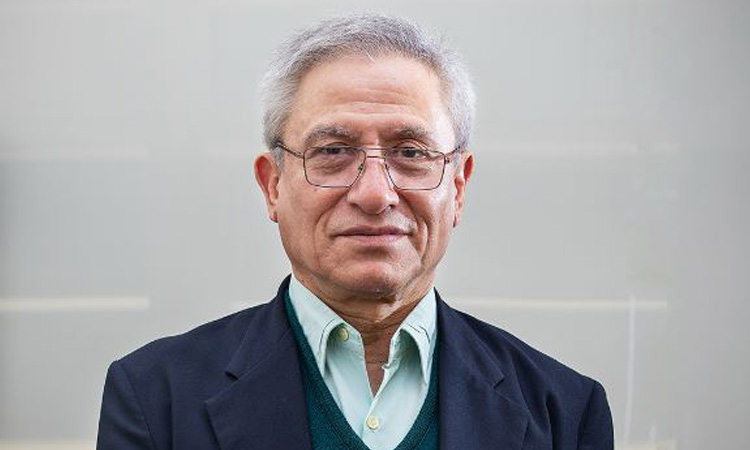News Flash
News Flash

DHAKA, April 3, 2025 (BSS) - Renowned economist Dr Zahid Hussain today said Bangladesh must leverage the goodwill generated by the reform commitments to finalize and implement changes that could reduce the combined tariff rate, ensuring a more favorable trade relationship moving forward.
Dr Zahid made the comment as US President Donald Trump has introduced sweeping reciprocal tariffs, effectively reversing nearly all U.S. tariff liberalization since the Great Depression of the 1930s.
Talking to BSS, Dr Zahid Hussain, also the former lead economist of the World Bank Dhaka office, said the average U.S. tariff surged from 2.5% to 20% with a single executive action. This move signals the onset of a global tariff war reminiscent of the Smoot-Hawley Tariff of 1930, which imposed a 20% duty on 20,000 imported items.
While its intention was to protect American farmers and businesses, it had unintended consequences that exacerbated the Great Depression. The act led to retaliatory tariffs from other countries, significantly reducing international trade by 67% between 1929 and 1934.
He said reciprocal tariffs set U.S. tariff rates to match the highest levels imposed on American exports, with potential reductions contingent on meeting specific demands.
Textiles and apparel, already burdened by some of the highest U.S. tariffs, continue to face challenges. Pew Research highlights the disproportionately high taxes on clothing and footwear imports from Bangladesh in the U.S.
Despite this, Dr Zahid said Bangladesh is subject to reciprocal tariffs due to USTR estimates that the combined tariff, para-tariff, and tariff equivalent of non-tariff barriers against U.S. imports into Bangladesh is 74%. President Trump claims to be generous by offering a “kind reciprocal tariff discount” of 50% to all countries, including Bangladesh.
Amidst this drastic shift in U.S. trade policy, there is a silver lining: competitors face similar or even higher reciprocal tariffs. For example, Vietnam is subject to 46%, India 26%, Cambodia 49%, Sri Lanka 44%, Thailand 36%, Pakistan 29%, Myanmar 44%, Laos 48%, China 34%, and Indonesia 32%. India’s 26% and Pakistan’s 29% are not too far behind. This suggests that Bangladesh’s competitiveness relative to its rivals remains largely unchanged.
However, he said this offers little comfort in the face of a potential global demand contraction triggered by the Trump tariffs. If tit-for-tat dynamics escalate, it remains uncertain whether Trump will reverse course, as he did earlier this year with Canada, Mexico, and China.
The immediate priority is damage control, as the reciprocal tariffs are already in effect, with no time allowed for a smooth transition. Even goods currently en route to the U.S. will be subject to the new tariffs, raising the critical question: Who will bear the cost?
“Our strategy should aim to shift the tariff burden onto buyers. A key advantage is that buyers have limited alternatives, as many of our competitors face similar or even higher reciprocal tariffs,” he said.
However, he said fierce competition among sellers poses a significant challenge, enabling wholesale buyers like Wal-Mart and Target to pass the tariff costs onto us.
To counter this, he said it is crucial for sellers to collectively agree not to accept a reduction in prices to offset the tariff. “The relevant association must closely monitor renegotiated prices and enforce penalties for non-compliance with this agreed position,” he added.
“Additionally, we should explore the possibility of qualifying our exports for duty exemptions by emphasizing their status as low-priced essential products,” he added.
Looking ahead, Dr Zahid said Bangladesh must tackle the 74% combined tariff rate on U.S. imports. “The legitimacy of this tariff—whether reciprocal or punitive—depends on the accuracy of the USTR's calculations. It appears that the USTR has simply divided the bilateral trade deficit by U.S. imports from the respective country to calculate the combined tariff rate,” said the economist.
For instance, with Bangladesh, he said the bilateral trade deficit was $6.2 billion, and U.S. imports from Bangladesh totaled $8.4 billion in 2023. Hence, the ratio 6.2/8.4 equals 74 when expressed as a percentage.
This method's arbitrariness is difficult to comprehend. Nonetheless, it is undeniable that average tariffs in Bangladesh are high at 14.8%, and nearly double that when para-tariffs are included. The restrictiveness of non-tariff barriers, with an average ad valorem equivalent of nearly 200% (World Bank, Change of Fabric 2022), far surpasses that of tariffs.
These barriers include burdensome sanitary and phytosanitary requirements, technical barriers to trade, pre-shipment inspection, nonautomatic licensing requirements, and price control measures.
The USTR's 2025 Foreign Trade Barriers report serves as a negotiating guide, outlining reforms necessary to reduce the combined tariff rate on U.S. imports.
The report acknowledges the interim government's recognition of these issues and its commitment to reform. For instance, it notes that the interim government has agreed to formal repayment agreements with U.S. companies owed arrears and pledged to streamline bureaucratic processes for repatriating investment-related capital.
President Trump justifies this policy as a measure to protect U.S. industries and correct trade imbalances, asserting that the U.S. has been unfairly treated by other nations.
An overview of the new tariff regime.
Bangladesh now faces a 37% reciprocal tariff. In 2023, Bangladeshi imports to the U.S. were subject to an average tariff of 15.7%, generating $1.02 billion in customs duties on $8.28 billion worth of goods. Tariffs play a significant role in Bangladesh’s trade policy and revenue generation, with an average applied MFN tariff of 14.8%.
Agricultural products face higher protection at 18.1%, compared to 14.1% for non-agricultural goods.